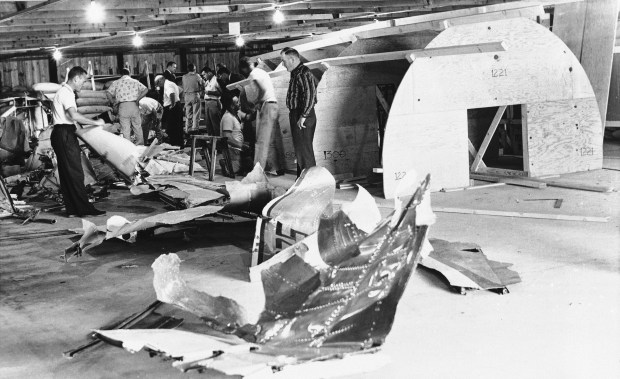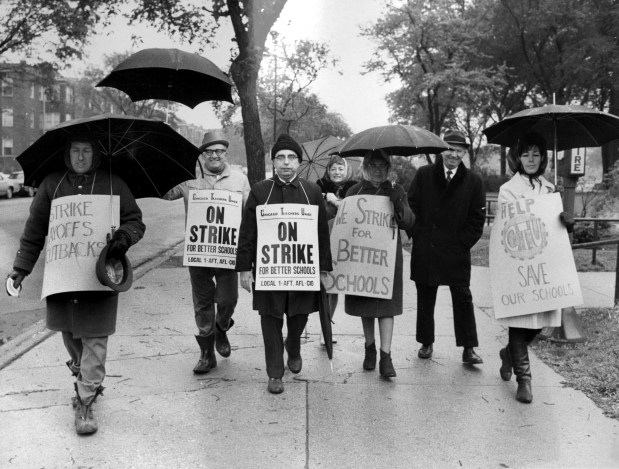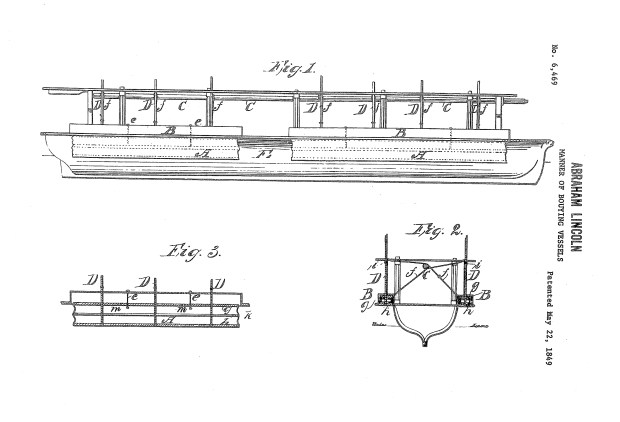Here’s a look back at what happened in the Chicago area on May 22, according to the Tribune’s archives.
Is an important event missing from this date? Email us.
Weather records (from the National Weather Service, Chicago)
- High temperature: 94 degrees (1925)
- Low temperature: 36 degrees (2006)
- Precipitation: 1.62 inches (1983)
- Snowfall: Trace (2011)
1849: Abraham Lincoln of Springfield received Patent No. 6469, which was a device for “buoying vessels over shoals.” Though the item was not manufactured, Lincoln is still the only United States president to hold a patent.
1855: A tornado — widely regarded to be the first documented to occur within the present-day city limits of Chicago — actually occurred in Des Plaines. According to the National Weather Service, confusion over the place name “Jefferson” likely led to the location error for what the Tribune called a “terrific tornado.”
1881: The Tribune printed the entire text — 15 pages without photos or illustrations — of the newly revised, plain-English version of the New Testament.

1962: Continental Airlines Flight 11, en route from Chicago to Kansas City, Missouri, crashed in Centerville, Iowa, after a bomb apparently brought onboard by a passenger exploded, killing all 45 occupants of the Boeing 707.
Federal authorities determined passenger Thomas G. Doty, of Merriam, Kansas, had lit sticks of dynamite that he purchased at a hardware store inside a trash bin within the plane’s lavatory, then returned to his seat.
Doty, who was traveling with another woman who wasn’t his pregnant wife, was described by investigators as an “unsuccessful salesman, a drifter, and a playboy who had affairs with other women.” He had filed for bankruptcy, was facing an armed robbery charge, checked out books about explosives from a library and had taken out life and travel insurance policies totaling $300,000 just prior to the flight.

1969: Despite a 14-hour mediation attempt by Mayor Richard J. Daley, Chicago Public Schools teachers went on strike — for the first time in the city’s history. There was a belief, however, the strike would be brief. (It lasted two days.)
102 days on strike: Take a look back at Chicago’s 11 teacher strikes since 1969
The major provisions of the contract were: 1.) No layoffs of teachers or other personnel in September 1969; 2.) No cutbacks in summer school programs; 3.) No decreases in educational programming; 4.) Implementation of all items agreed to previously; 5.) Certification for full-time basis substitute teachers with three years of satisfactory service; 6.) No agreement on other salary adjustments; and 7.) Salary increases of $100 per month for teachers and 7.5% for civil service workers effective in September 1969. Among the teachers’ demands were better support from the Illinois Board of Education to obtain state funds, as well as smaller class sizes and no staffing cuts.

2003: Regenstein African Journey opened at Lincoln Park Zoo. Constructed in the space formerly known as the large mammal habitat, the space made visitors feel they were immersed in the animals’ habitats. Gone were railings and extra spacing that separated human from beast.
By stepping into a curved glass exhibit lit by a dim, red light, zoogoers experienced nocturnal behavior of Madagascar hissing cockroaches and heard their hiss from speakers nearby. Howie, a pygmy hippo, could be seen through a sheet of glass as he bounded underwater in slow motion. And, the outdoor exhibits allowed African wild dogs to chase each other in the absence of concrete pens.
Want more vintage Chicago?
Subscribe to the free Vintage Chicago Tribune newsletter, join our Chicagoland history Facebook group, stay current with Today in Chicago History and follow us on Instagram for more from Chicago’s past.
Have an idea for Vintage Chicago Tribune? Share it with Kori Rumore and Marianne Mather at krumore@chicagotribune.com and mmather@chicagotribune.com



